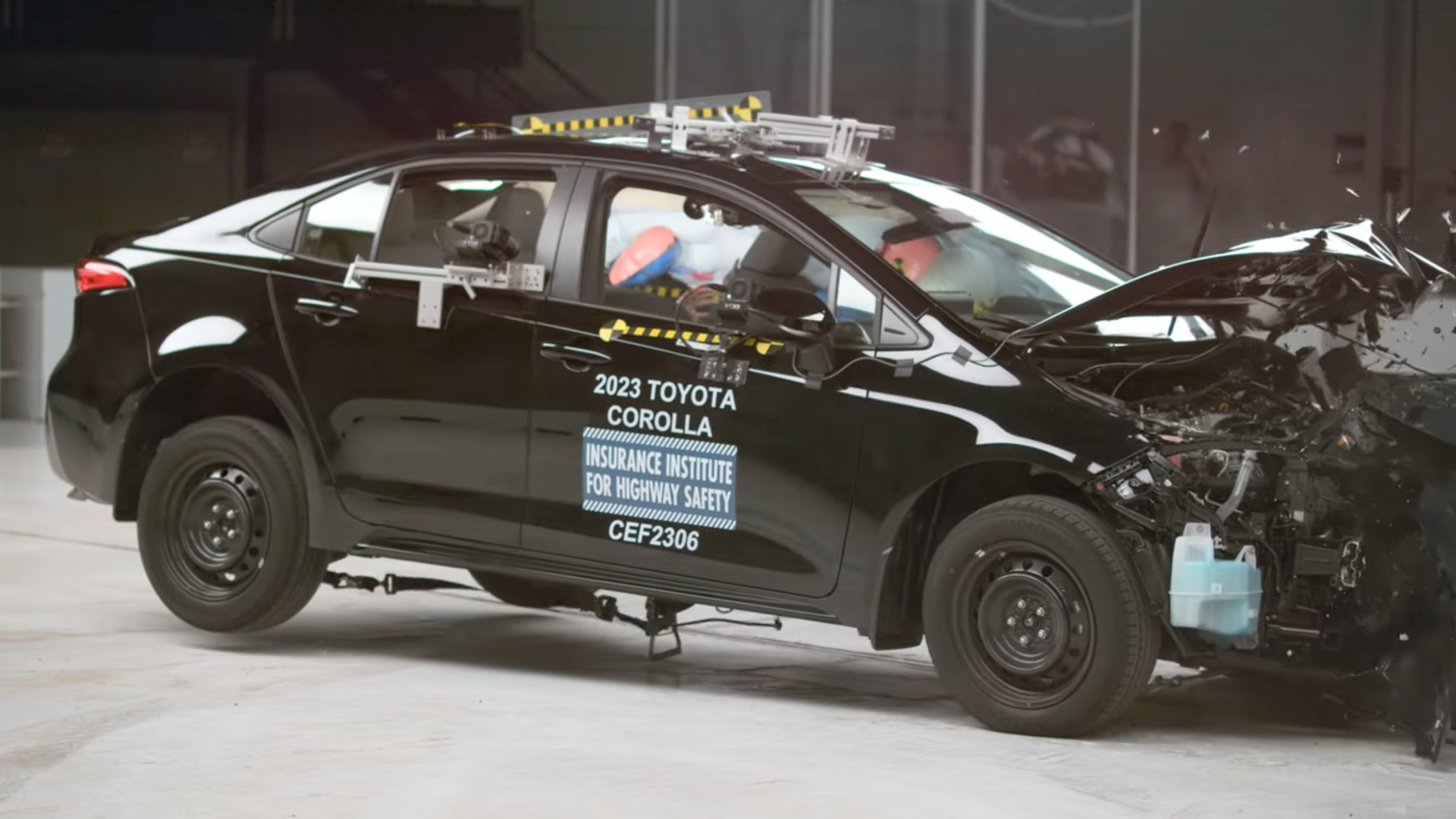

The Insurance Institute for Highway Safety updated its moderate front overlap crash test last year, where a car hits a barrier with a deformable aluminum face at 40 mph, with only the driver’s side of its front end. After realizing that front-seat passengers were far safer than rear-seat passengers, the test was updated to rate backseat safety. Unfortunately for small car owners, none of the five models tested by the IIHS performed well.
The five cars tested were the Honda Civic, Toyota Corolla, Kia Forte, Nissan Sentra, and Subaru Crosstrek. Of those five cars, the only two that received an overall “Acceptable” rating in the moderate front overlap crash test were the Civic and Corolla. The Forte, Sentra, and Crosstrek all received “Poor” ratings due to their rear seat crash test performance.

Why is it so much more dangerous in the back seat of small cars than in the front seat? Mostly technology. Front seat passengers get better airbags and seatbelt pre-tensioners. The lack of an airbag directly in front of rear passengers increases the risk of head and neck injuries, as they’re more likely to hit the front seat with their face. The lack of rear seatbelt pre-tensioners causes what the IIHS calls “submarining,” which is where a passenger’s abdomen slips underneath the lap belt, causing abdominal injuries.

Crash dummies in all five of the small cars experienced submarining, which caused them all to receive a “Poor” rating for their rear restraints and kinematics. The Civic and Corolla scored “Good” ratings in the rest of the rear seat categories: Head and Neck, Chest, and Thigh. Unfortunately, the Forte and Sentra were poorly rated in the Head and Neck category, while the Crosstrek received a “Marginal” rating.
Now that the IIHS added rear seat categories to the moderate overlap crash test, it changes the overall ratings for each car, which could play a huge role in which cars customers choose, especially those who are parents. It’s worth noting, though, that the IIHS claims that the back seat is still the safest place for young kids, even in these cars, as they can be injured by front airbags.

Got tips? Send ’em to tips@thedrive.com